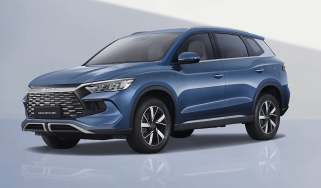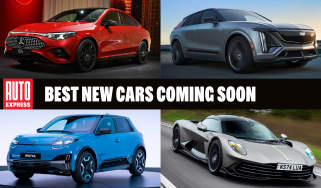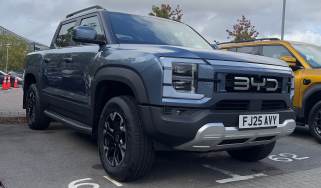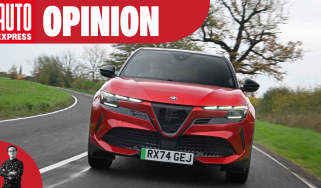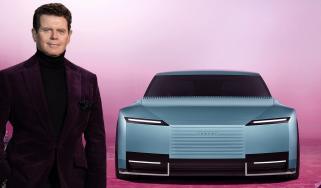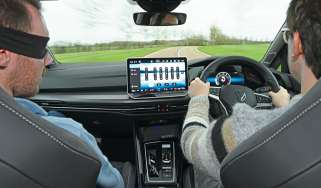BYD’s plug-in hybrid onslaught to be led by 124-mile secret weapons
Plug-in hybrid tech looks like playing an increasingly important role in BYD’s future, but expect more EV range, faster charging and better fuel economy.
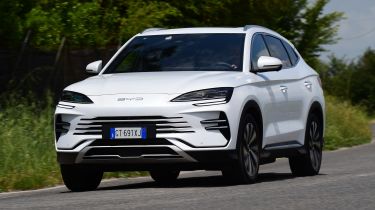
Chinese giant BYD is already making a major impact on UK car buyers with its rapidly expanding range of electric cars. Now it’s aiming to win more sales on a fresh battleground – the plug-in hybrid (PHEV) market.
The brand’s executive vice president, Stella Li, has revealed plans to supplement the existing BYD Seal U DM-i – the sole BYD hybrid model currently sold in the UK – and the Seal 06 DM-i that will be arriving soon with a succession of new PHEV cars for Europe.
Li explained: “We're going to continue to bring more PHEVs here, the DM-i, and then different models. So by then, the EV range will easily be 80 kilometres to 120 kilometres [50 miles to 75 miles]. And in the future, if you need it, it can be 200 kilometres [124 miles].
“We're going to cover from small to medium size and to the bigger size and also from SUV to sedan and station wagon.”
PHEV and tax
The electric range of plug-in hybrids is particularly significant in the UK because of the impact it has on Benefit-in-Kind (BiK) company car tax.
A few PHEVs, including the MG HS PHEV as well as the Volkswagen Passat and Golf eHybrids, currently have official WLTP EV ranges of over 70 miles, putting them in the five per cent BiK tax bracket. A PHEV with an EV range of over 130 miles, however, would be taxed at the same 2 per cent rate as a pure electric car under today’s system.
A 200km EV range equates to 124 miles and Li says that the technology which can achieve this is close to a European launch. “It’s in China now and then it is within one to two years,” she continued.
The car she may be referring to is the N9 from BYD’s Denza premium brand, a full-size SUV recently launched on to the Chinese market. It uses the firm’s latest e-Platform 3.0 chassis technology and a dual-motor plug-in hybrid powertrain with a 2.0-litre turbocharged petrol engine and a large 49kWh battery pack. The set-up delivers an electric range of just over 125 miles, although this is measured on the less stringent Chinese CLTC efficiency tests.
The UK launch of the Denza brand has already been confirmed and it may well bring with it the latest generation of BYD plug-in hybrid technology as seen on the N9. The BYD PHEV models currently in the UK are still a generation behind the brand’s most advanced tech, but it is coming soon.
The UK taxation issue with PHEVs is further complicated by ongoing plans to make official efficiency tests more exacting so that they better reflect the real-world emissions of PHEVs. Whatever the testing regime in Europe, Li is in no doubt that the technology needs to move forward – but is also confident that BYD already has the answers.
“PHEV is an important product but we need to have a different technology,” she said. “First, the EV range [must be] long and second, fuel consumption [must be] lower, even lower than an ICE car.”
Plug-in hybrid’s time is coming
Plug-in hybrids have been popular for years, but short EV ranges have meant they can spend a lot of time with a flat battery, running as a particularly heavy and inefficient petrol car. With a real-world EV range of over 100 miles, more PHEV owners could realistically use their cars purely on electric power most of the time, charging just once or twice a week and only using the petrol engine on longer journeys.
BYD believes its new generation of hybrid tech puts it close to that goal. It also says other OEMs are being forced to turn to ‘inferior’ range extender hybrid technologies – where a petrol engine is used to charge a battery that drives the wheels – in a bid to keep pace.
“A lot of OEMs are now trying to come closer to our technology with the range extenders but our DM–i is far above,” said BYD’s European market special advisor, Alfredo Altavilla.
“The beauty of the DM-i is that you can have three different ways of using the car. Just EV, a combination of EV and ICE and pure ICE. It’s your decision depending on how much power you need from the engine. The range extender is behaving in only one way.”
How big could plug-in hybrids be for BYD and the UK car market as a whole? The brand is very aware that the European car makers are pushing governments and the EU to allow hybrid cars with long EV ranges to be sold beyond the proposed 2035 petrol and diesel ban. And the firm is planning for PHEVs and pure EVs to be sold alongside each other in a mix that’s determined by local market demands, for some time to come.
“There are countries which are more EV oriented where the largest part of the mix would be EV and others, especially in southern Europe, where plug-in hybrid would be the vast majority of the mix, like in China,” said Li.
Come and join our WhatsApp channel for the latest car news and reviews...
Find a car with the experts





